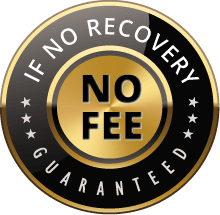Tornadoes, with their ferocious winds and destructive power, are known for the immediate devastation they bring. However, it's not just the visible damage that property owners need to be concerned about. There are often hidden damages that can go unnoticed but pose significant threats to the structural integrity and safety of a building. Here we will talk about some of the common damages (many showing up long after the storm) and what to do to get them fixed.

Common Damage:
- Roof Damage: The roof of a building is one of the most vulnerable areas during a tornado. While missing shingles or visible holes may be evident, it's the less apparent damage that can be problematic. Check for loose or shifted roofing materials, compromised flashing, and weakened trusses. Hidden roof damage can lead to water leaks, mold growth, and structural issues over time. It's essential to have a professional inspection to identify and address these issues promptly.
- Water Infiltration: Tornadoes often bring heavy rains, and even a seemingly intact building can suffer from water infiltration. Hidden leaks can lead to rot, decay, and mold growth within walls and ceilings. To identify water damage, look for discolored patches on walls or ceilings, musty odors, or peeling paint. Addressing water infiltration promptly is crucial to prevent further structural damage and health hazards.
- Foundation Cracks: Tornadoes can exert tremendous pressure on a building's foundation, leading to hidden cracks or shifts. Foundation issues may not be immediately visible, but they can result in structural instability and long-term problems. Look for signs like uneven floors, sticking doors, or cracks in interior walls. A structural engineer should assess the foundation to detect hidden damage and recommend appropriate repairs.
- Electrical Damage: Tornadoes can damage the electrical systems in a building, and this damage might not be readily apparent. Wiring may be compromised within walls or ceilings, posing a fire hazard. Even if your power is restored, hidden electrical damage can be dangerous. If you experience flickering lights, tripped circuits, or unexplained electrical issues, consult an electrician for a thorough inspection and necessary repairs.
- Insulation and Energy Efficiency: Tornadoes can disrupt insulation, causing gaps and voids that affect a building's energy efficiency. Escaping air can result in higher utility bills and discomfort within the property. Insulation damage may not be visible, but if you notice temperature fluctuations or drafts, consider having an energy audit to identify areas of concern and improve your property's energy efficiency.
- Hidden Structural Compromises: Tornadoes can compromise a building's structural integrity, leading to hidden issues that aren't immediately noticeable. Look for signs like sagging ceilings, uneven floors, or cracks in walls. If you suspect structural damage, it's essential to hire a structural engineer to conduct a thorough assessment and recommend the necessary repairs to ensure the safety of the property.

If you have been in a tornado, or near one these should be your next steps:
- Professional Inspections: After a tornado, it's crucial to schedule professional inspections by contractors, roofers, electricians, and structural engineers to assess the extent of damage, both visible and hidden.
- Document the Damage: Take photos and document any visible and hidden damages for insurance purposes. This documentation can be invaluable during the claims process.
- Notify Your Insurance Provider: Contact your insurance company to report the damages and initiate the claims process promptly.
- Contact The Voss Law Firm as many times insurance adjusters have left the area and are looking for lower payouts or denying claims as the storm has passed.
- Choose Experienced Contractors: Select experienced and reputable contractors to perform the necessary repairs. Ensure they are licensed and insured.
- Preventive Measures: Consider investing in preventive measures, such as storm-resistant roofing, reinforced foundations, and energy-efficient upgrades to protect your property from future tornado damage.
In conclusion, tornadoes can inflict hidden damages that pose long-term threats to property and safety. It's essential to be proactive in identifying and addressing these issues through professional inspections and timely repairs. By taking these steps, property owners can ensure their buildings are safe, structurally sound, and more resilient in the face of future tornadoes.
At the Voss Law Firm we strive to help you get back to normal as fast as possible after an insurance denial or “low ball” offer, even if the insurance company is delaying.
If you feel you have been unfairly treated by your insurance company, please call (888) 296-1986, input your information for a Free Claim Review or chat with us today.



















